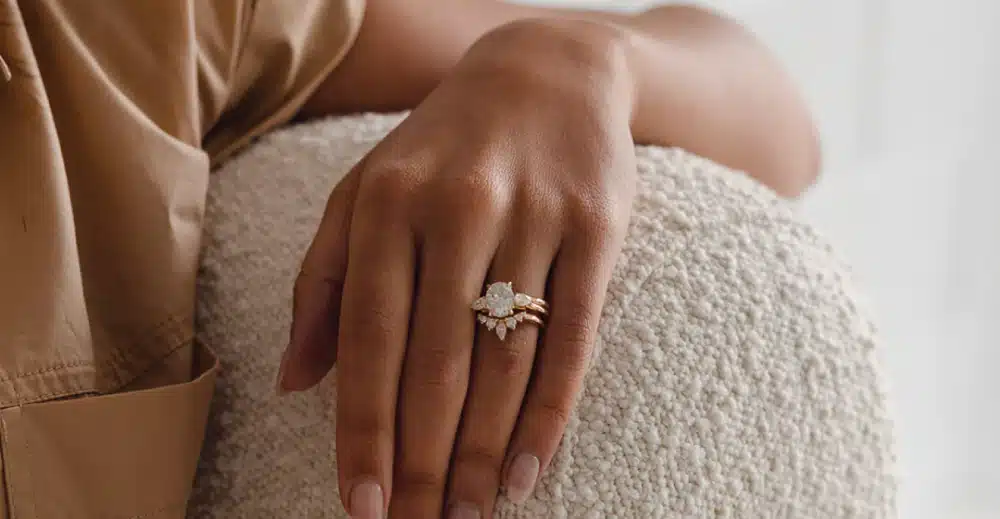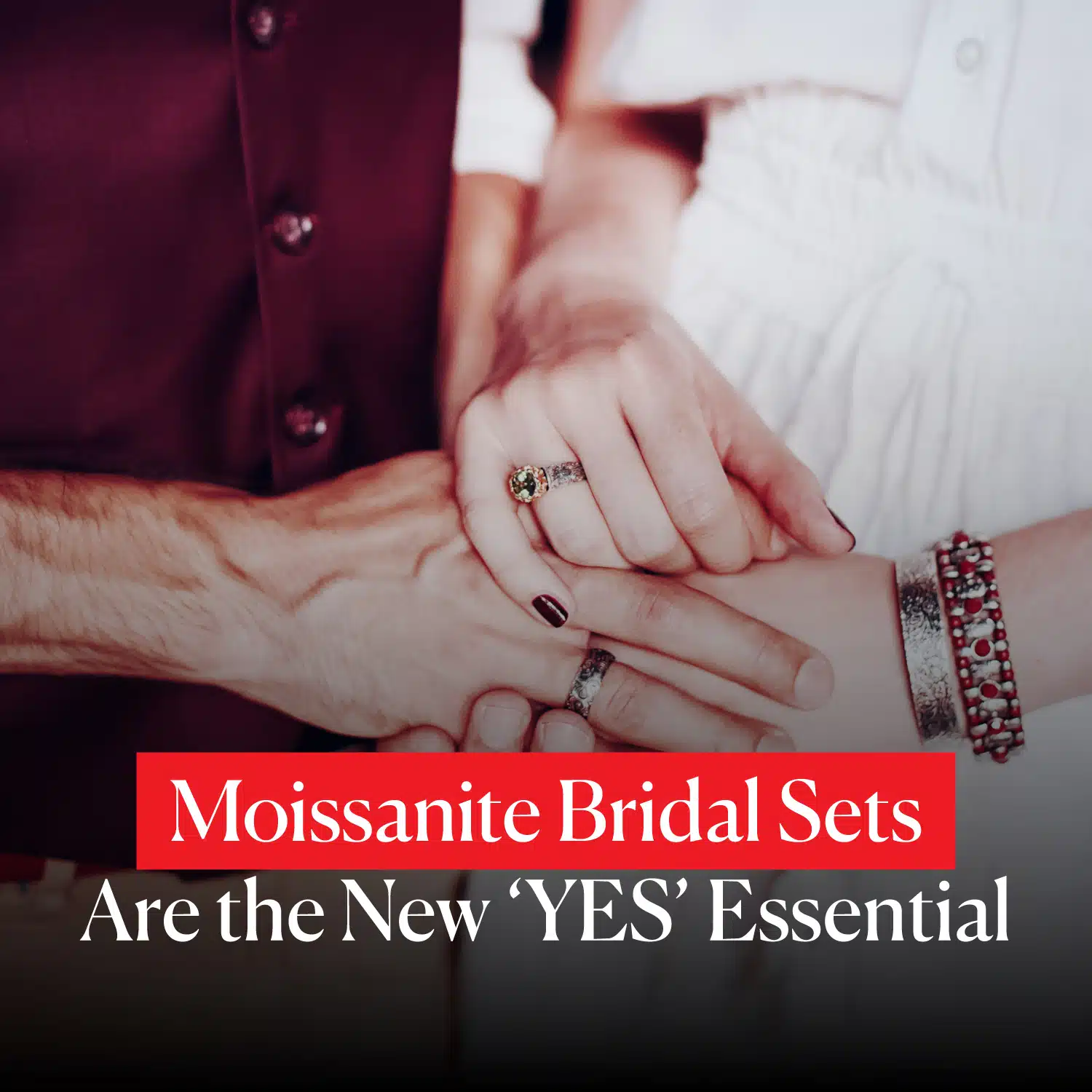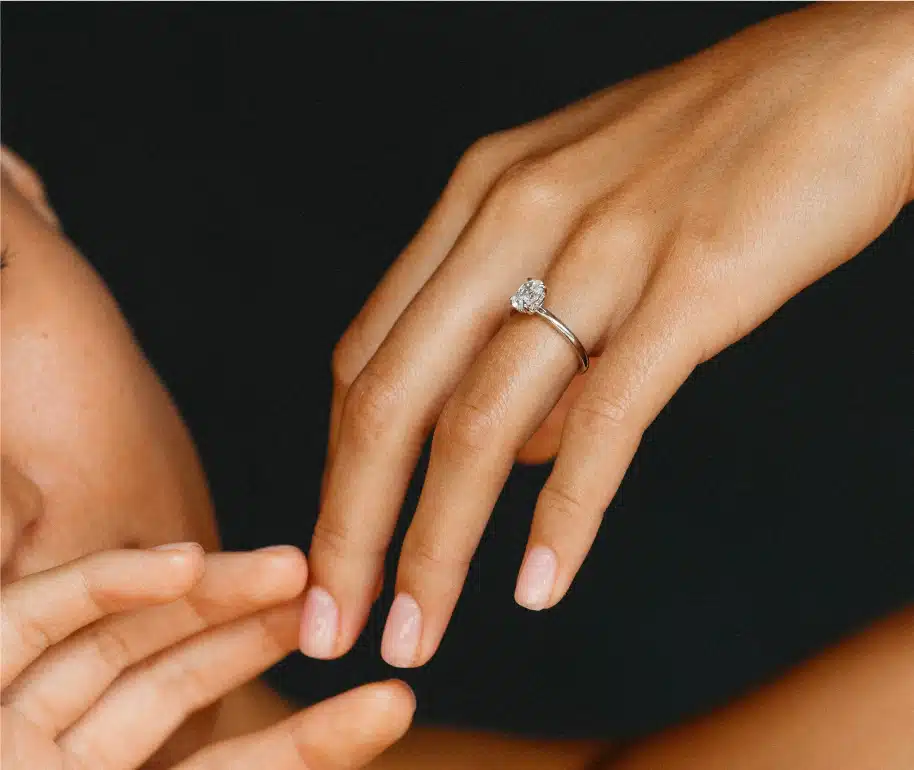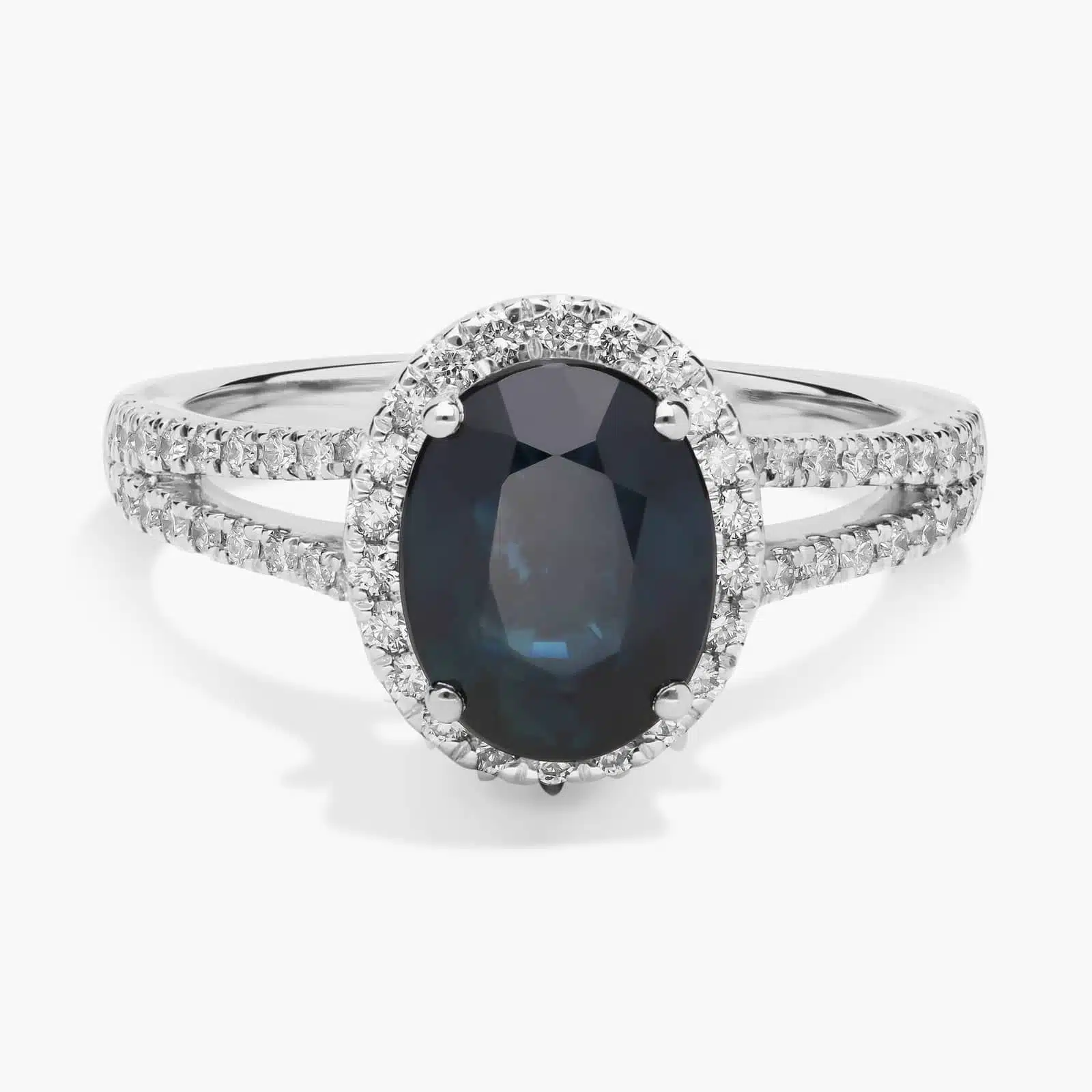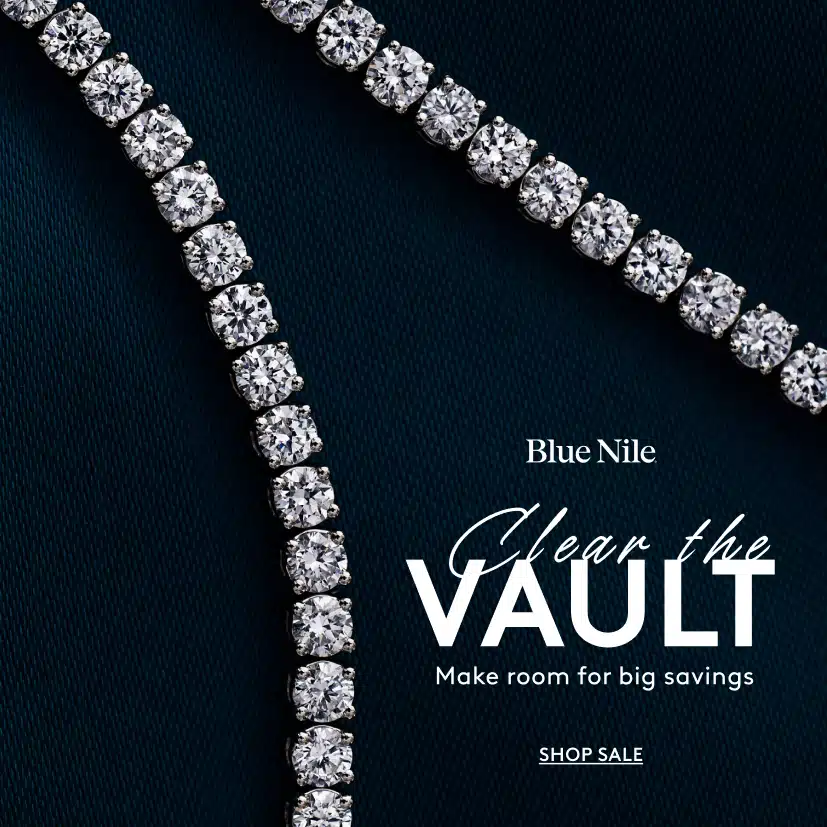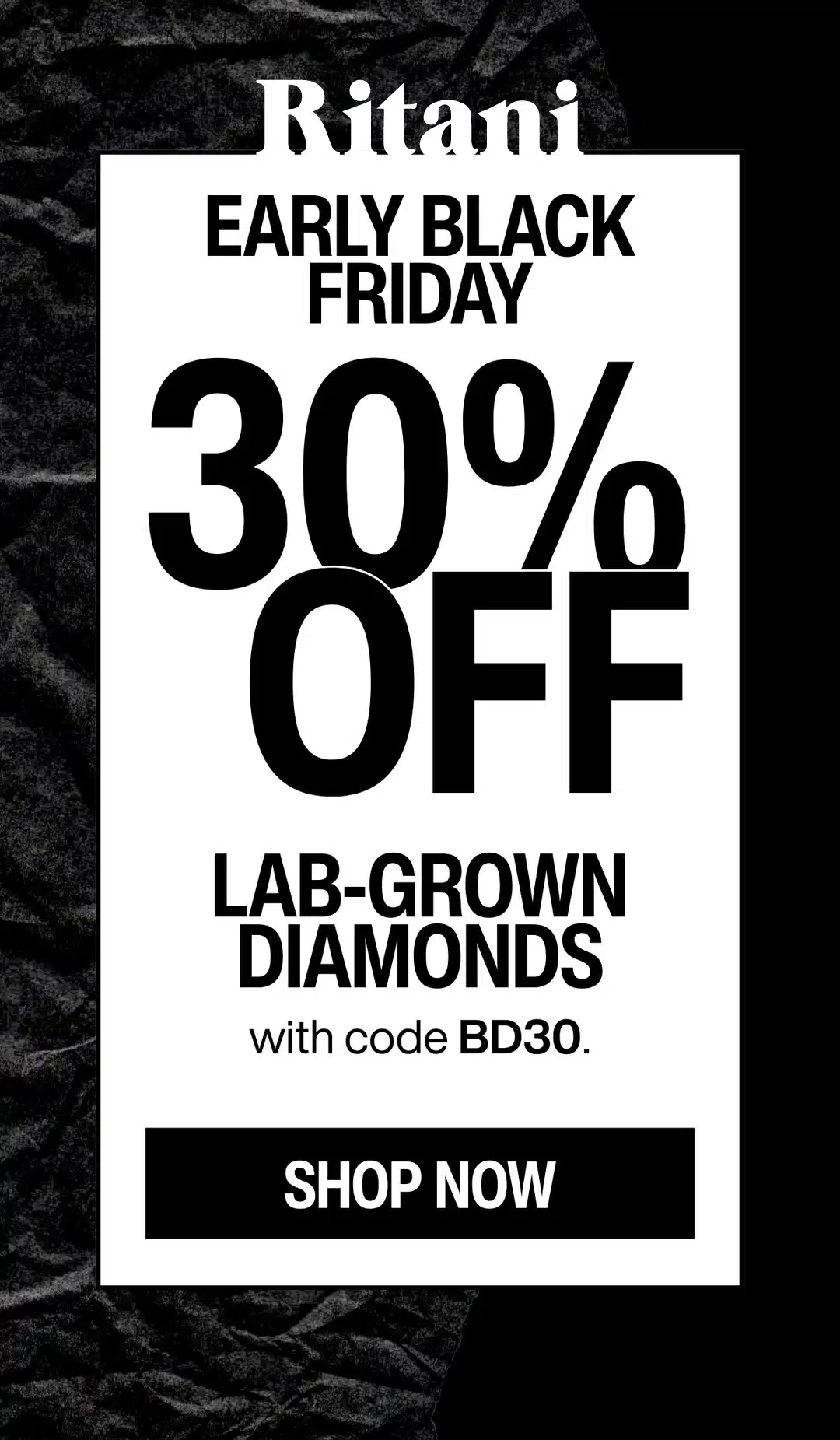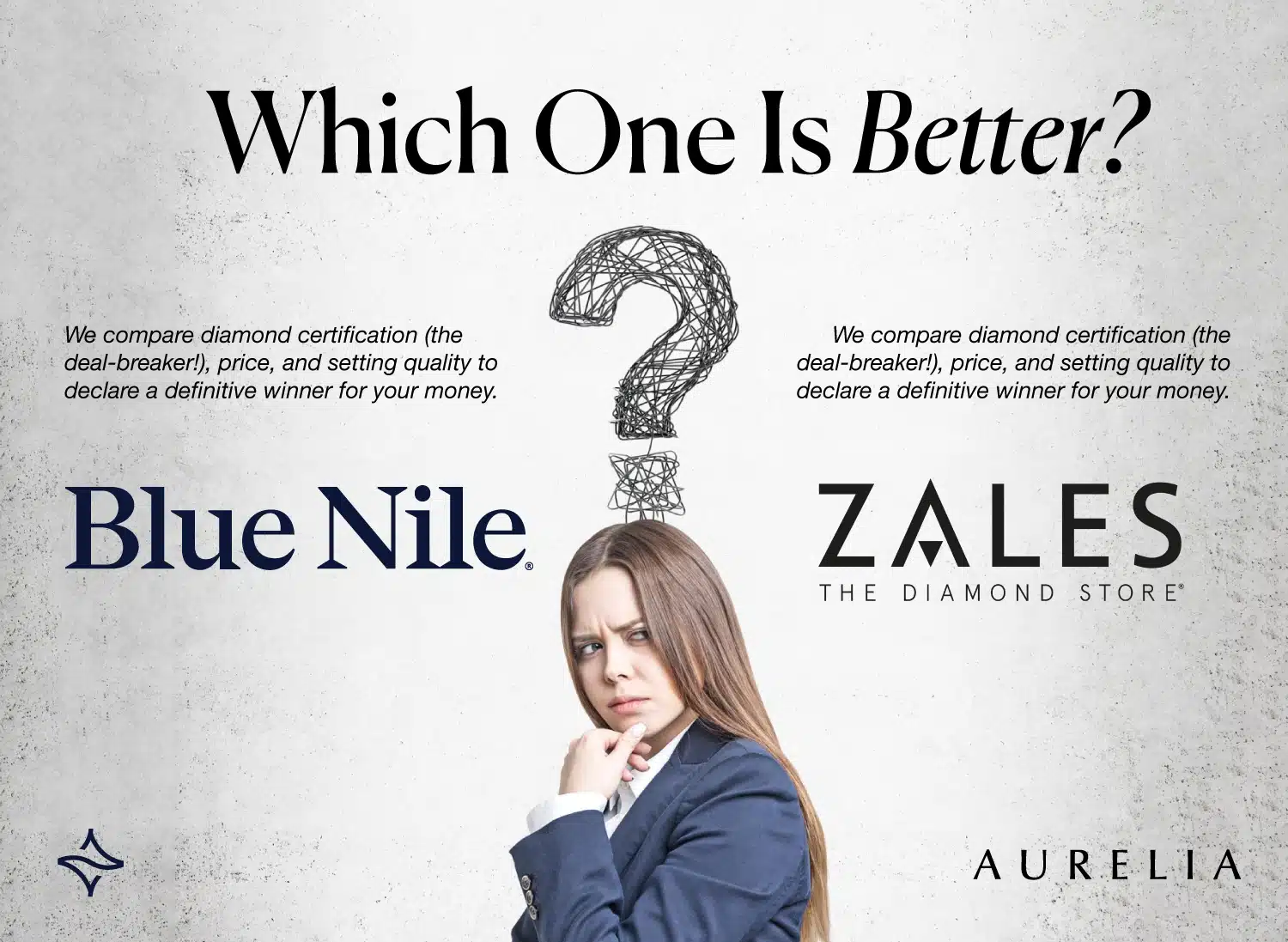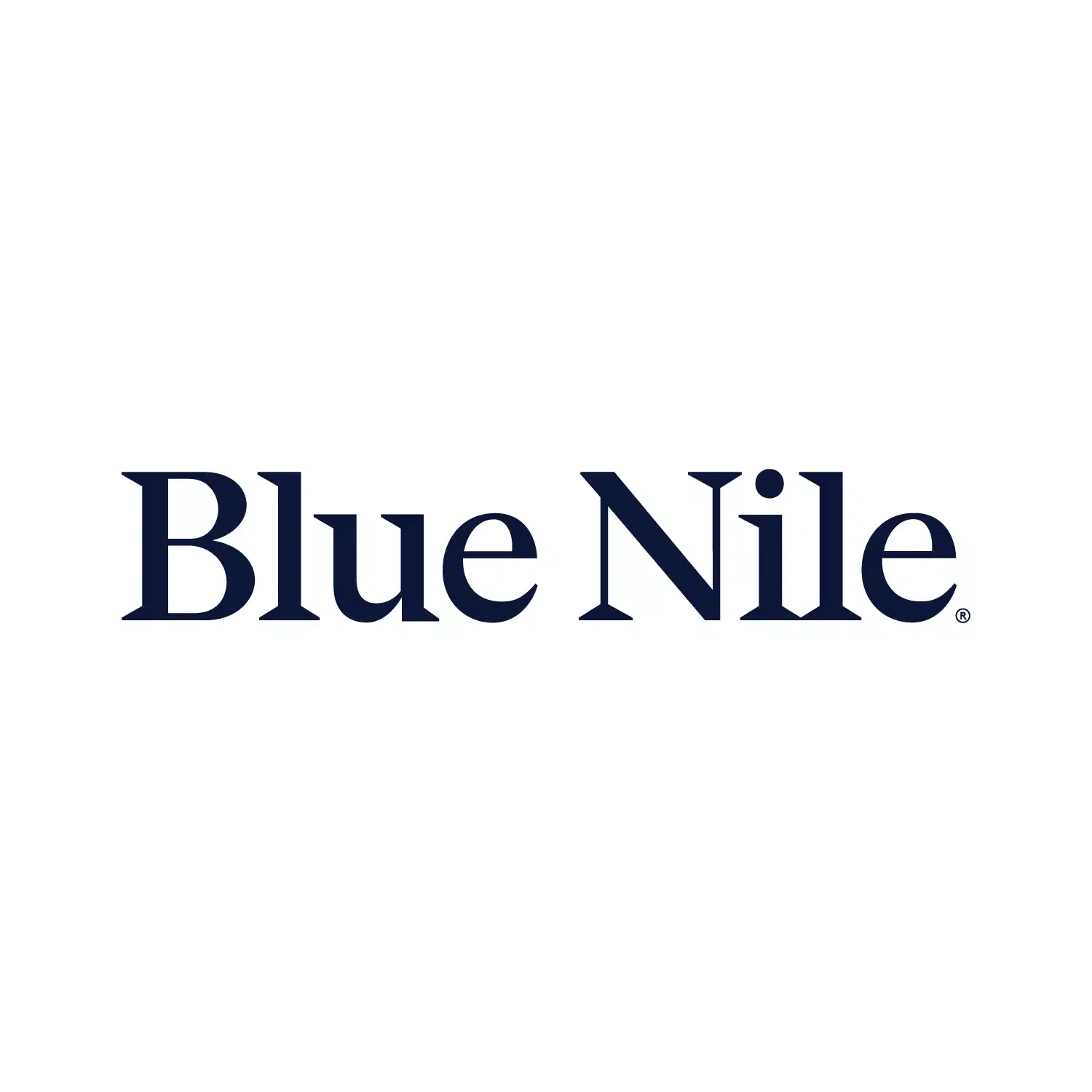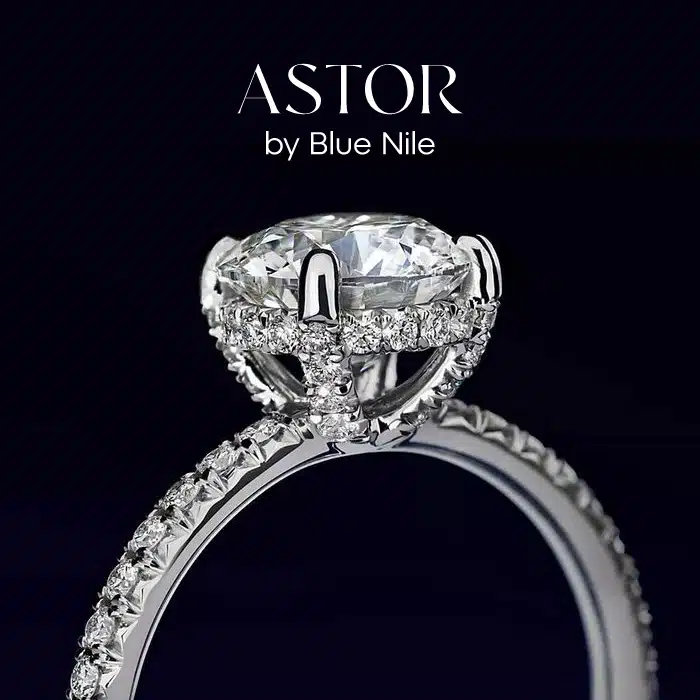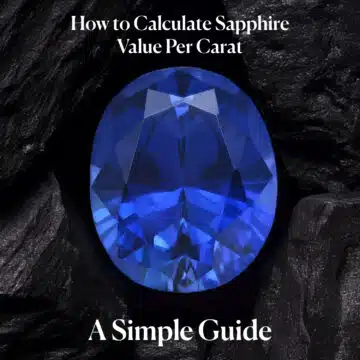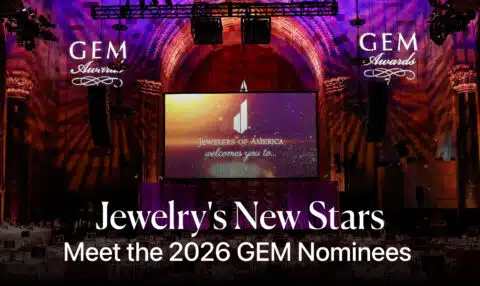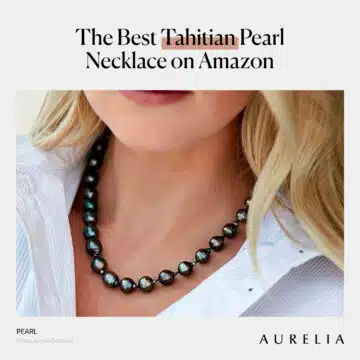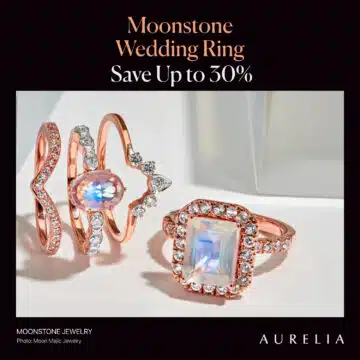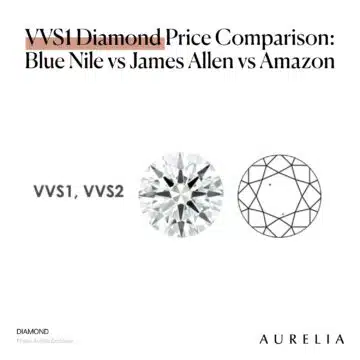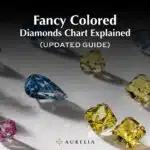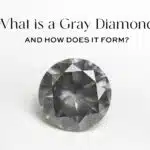When it comes to the Zales vs Blue Nile debate, for a savvy, modern buyer who prioritizes certified quality and value, Blue Nile is unquestionably the better choice.
You’ve seen them both. Zales, the familiar name in every mall, and Blue Nile, the online giant that changed the game. Choosing between them isn’t just a comparison of two stores; it’s a choice between two completely different ways of buying a diamond.
Best Deal Of The Year – Final Days
Blue Nile’s “Clear The Vault” is ON.
Shop Fine Jewelry Upto 70% OFF.
*Exclusions may apply. See Blue Nile for complete details.
I’m Mehedi, and I’ve been on both sides of that jewelry counter. My mission here isn’t just to list stats; it’s to pull back the curtain on the traditional “mall store model” and show you why the modern online approach can put a better diamond on your finger for significantly less money.
Diamond IQ Test: Natural or Lab-Grown?
Two identical diamonds: GIA Certified, 1.51ct, D Color, VVS1, Ideal Cut. One is natural ($16,530), the other is lab-grown ($2,390). Choose the diamond you like better and see if you can match it to its origin.
The Bottom Line Up Front: Blue Nile vs. Zales Scorecard
Before we dive into the weeds, let’s get right to the point. I’ve spent years analyzing what makes a jewelry purchase a smart investment versus a risky gamble.
I’ve distilled the most critical factors into this simple scorecard. This is the unfiltered, at-a-glance truth of how these two giants stack up where it really matters.
| Feature | Blue Nile | Zales | Mehedi’s Verdict & The “So What” |
| Diamond Certification | GIA/IGI Exclusively. Guaranteed proof. | Inconsistent. Many have no report. | Blue Nile wins. This isn’t a competition. |
| Diamond Selection | ~150,000+ loose GIA diamonds. | Pre-set rings. No loose stones. | Blue Nile wins. You have ultimate control. |
| Pricing & Value | Aggressively competitive online prices. | Significant mall store retail markup. | Blue Nile wins. Your money buys more diamond. |
| Shopping Experience | Data-driven 360° online empowerment. | Traditional in-person, hands-on help. | Tie. This is purely your personal preference. |
| Return Policy | 30-day full money-back guarantee. | 30-day full money-back guarantee. | A solid, trustworthy safety net from both. |
That table gives you the verdict, but as your friend in the business, I need you to understand the why behind those ratings, especially the first one.
Deal Alert: Black Friday! Get up to 40% OFF fine jewelry at Blue Nile !
One In A Lifetime Sale: “Clear The Vault” – Get up to 70% OFF on select jewelry at Blue Nile !
Exclusive Offer: Lock in a gorgeous ring! Get up to 20% OFF engagement ring settings at James Allen .
The Deal-Breaker: Why Diamond Certification Isn’t Just a “Feature”—It’s Everything
I cannot overstate this: The most important row on that entire chart is the first one. The stark difference in their approach to diamond certification is the single biggest reason why my verdict is so decisive.
Blue Nile built its entire business on a foundation of trust and transparency. They almost exclusively sell diamonds graded by the GIA (Gemological Institute of America), the world’s most respected and stringent independent lab.
A GIA certificate is like a diamond’s passport—it’s an unbiased, universally accepted document that guarantees the quality you’re paying for. This is the bedrock of what makes Blue Nile a reputable company.
Zales, on the other hand, operates on a model that gives me serious pause. While they do offer some GIA-certified stones, a huge portion of their inventory has certifications from less-rigorous labs or—and this is a major red flag for any informed buyer—no certification at all.
Buying an uncertified diamond is a blind gamble. You are simply trusting the in-store salesperson’s word on its quality, with no independent proof. As a jeweler, that’s a risk I would never, ever recommend you take.
Blue Nile is one of the biggest and most recognized online jewelry retailers, offering an extensive and exclusive inventory. Their high-resolution images are improving and getting closer to the quality offered by James Allen, while their prices remain highly competitive. Right now, Blue Nile offers up to 30% savings on jewelry during a limited-time sale.
WHAT WE LOVE ABOUT THEM:
- 30-day no-questions-asked return policy, with a prepaid shipping label provided by Blue Nile.
- Lifetime warranty on all purchases.
- Free shipping on every order.
- Complimentary services every six months, including prong tightening, repolishing, rhodium plating, and cleaning.
- Insurance appraisal included with your purchase.
- One free resizing within the first year.
- High-quality images available for roughly half of their diamond selection.
- 24/7 customer service support.
- Full credit toward future upgrades, as long as the new item is at least double the value.
- Best-in-class order fulfillment process.
Your Money vs. Their Rent: Understanding the Value Gap
The second most critical point is Pricing & Value. This isn’t about one company being “greedy” and the other not; it’s about two fundamentally different business models.
- The Zales Model (High Overhead): Zales has to pay for the rent on over 700 mall locations, the salaries and commissions of thousands of employees, and the cost of holding a massive physical inventory. Those costs are inevitably baked into the price of their rings.
- The Blue Nile Model (Low Overhead): Blue Nile operates primarily online. Their leaner business model means a huge portion of that overhead simply doesn’t exist. They pass those savings directly on to you.
The “so what” here is simple: a significant chunk of your money at Zales is paying for their real estate. At Blue Nile, that same money is paying for a bigger, brighter, and—most importantly—verifiably higher-quality diamond for your partner’s hand.
Why Diamond Certification is the Only Thing That Really Matters
Let’s cut through all the noise. We can talk about store design, shopping experience, and brand history, but in the modern diamond market, there is only one factor that truly separates a smart investment from a reckless gamble: the quality and consistency of its diamond certification.
This single piece of paper is everything. It’s the deed to your house, the Carfax report for your car. It is the unbiased, internationally recognized proof that the diamond you’re buying is exactly what the seller claims it is. Without it, you are buying on pure faith.
As someone who is GIA-trained, I want to be crystal clear: the stark difference in how Blue Nile and Zales approach certification is the most important part of this entire comparison.
Blue Nile’s GIA-First Promise: The Gold Standard of Trust
Blue Nile built its two-decade reputation on an unbreakable rule, a non-negotiable promise to its customers: transparency through certification.
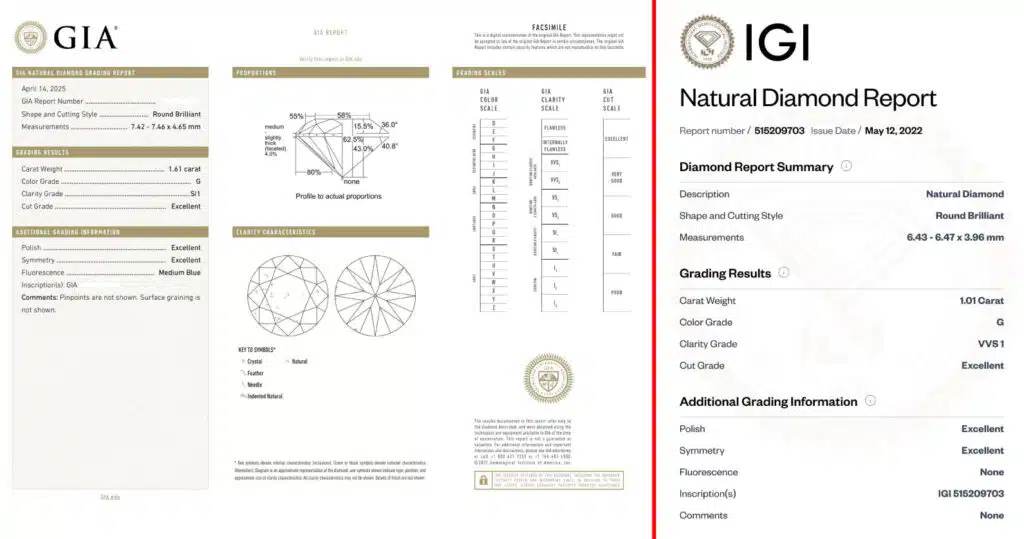
The Power of the GIA:
For their natural diamonds, Blue Nile almost exclusively uses the GIA (Gemological Institute of America). The GIA is a non-profit organization; their only job is to grade diamonds with brutal, scientific accuracy. They are the supreme court of the diamond world.
When a GIA report says a diamond is a G-Color and VS1-Clarity, that grade is accepted as fact everywhere on the planet. This is your ultimate protection. You can see the entire system they grade on in our Diamond Grading Chart (The 4 Cs) guide.
The IGI for Lab-Grown Diamonds:
For their lab-grown diamonds, Blue Nile primarily uses the IGI (International Gemological Institute). The IGI has established itself as the world’s leading authority for grading lab-created diamonds, applying a similarly rigorous standard.
This commitment is the core of their business model. It ensures that when you’re deciding on the best diamond clarity or color for your budget, you are comparing apples to apples. This unwavering standard is the central pillar of why Blue Nile is a reputable company.
Zales’ Inconsistent Certification: A Major Red Flag for Buyers
This is where my perspective as a jeweler becomes a serious warning. I find Zales’ approach to certification to be deeply concerning for a modern buyer, and it’s a risk I cannot in good conscience recommend.
Their inventory falls into a confusing mix of three categories, and two of them are major red flags.
Category 1: GIA-Certified Diamonds (The Exception)
To be fair, Zales does carry some GIA-certified diamonds. You can find them if you look. However:
- These are usually premium, branded collections.
- They come at a significantly higher price point.
- They are the exception, not the rule.
Category 2: Independently Certified Diamonds (The Grade Inflation Trap)
This is where the water gets muddy. A large portion of Zales’ diamonds are graded by other labs:
- Labs often lack GIA’s strict standards or consistency.
- This leads to significant “grade inflation.”
- You unknowingly overpay for lower-quality diamonds.
- The certificate looks real, but the authority is weak.
Category 3: Uncertified Diamonds (The Biggest Financial Risk)
This, frankly, is shocking in the modern diamond market, and it’s my biggest concern. Many rings at Zales are sold with no independent grading report at all.
- You rely 100% on the salesperson’s opinion.
- There is no unbiased proof of diamond quality.
- Selling or upgrading the ring is extremely difficult.
- Accurate insurance appraisal is impossible.
- An uncertified diamond is a massive financial risk.
The core of this entire debate boils down to one simple question of proof. And on that front, the answer is clear: Blue Nile provides undeniable proof with every single stone.
A Real-World Price Comparison: Let’s See What $5,000 Really Buys You
Alright, let’s get down to brass tacks. For ninety-nine percent of us, the single biggest factor in this decision is the bottom line: where does my money buy me a better diamond?
Forget percentages and abstract comparisons for a minute. Let’s make this real. Imagine you have a solid, hard-earned budget of $5,000 for the perfect engagement ring. Let’s take that money and go shopping at both stores to see what it really gets us.
Shopping at Zales (The Mall Store Model)
Picture it. You walk into a Zales in your local mall. The lights are bright, the glass cases are sparkling, and a friendly salesperson is ready to help. That beautiful ring in the velvet-lined display case is undeniably appealing. It feels safe, traditional, and tangible.
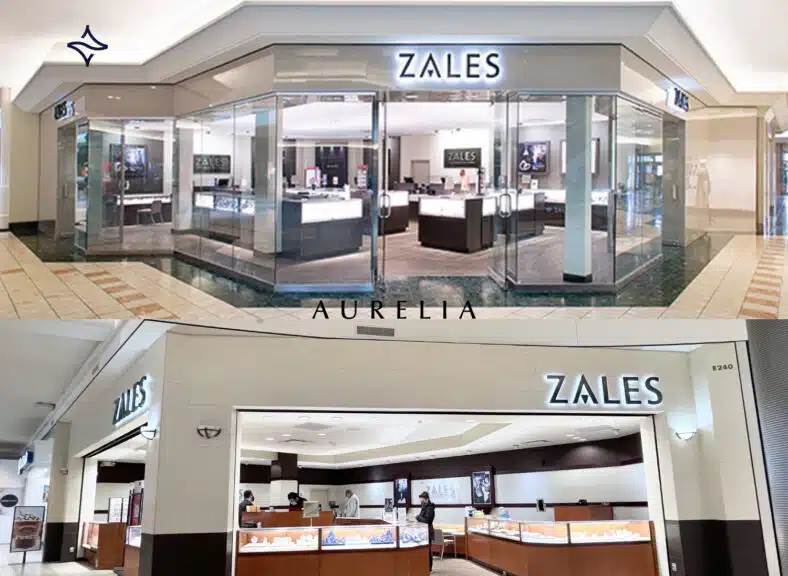
But as a jeweler, I want you to look past the velvet and ask the tough question: what am I really paying for here?
Here’s what they don’t put on the little white price tag. When you buy that ring, a significant chunk of your $5,000 instantly vanishes to pay for things that have nothing to do with your diamond. It’s paying for:
- Prime Real Estate: The rent on 700+ premium mall locations.
- Inventory Costs: The cost of keeping thousands of rings physically stocked in those stores.
- Sales Commissions: The salary and commission for the very helpful salesperson assisting you.
- Massive Marketing: The commercials and ads that keep them a household name.
After all that overhead is paid for, what’s left of your $5,000 goes into the ring itself. The result? You’ll walk out with a very beautiful, likely non-GIA certified, 0.75-carat diamond engagement ring. It’s a lovely ring, but you have to know that a huge portion of your investment just paid for their operating costs.
Shopping at Blue Nile (The Modern Online Model)
Now, let’s take that same $5,000 and go home. You pour a cup of coffee, open your laptop, and go to Blue Nile. The experience feels different. It’s not about being sold to; it’s about doing your own research with powerful, transparent tools at your fingertips.
Best Deal Of The Year – Final Days
Blue Nile’s “Clear The Vault” is ON.
Shop Fine Jewelry Upto 70% OFF.
*Exclusions may apply. See Blue Nile for complete details.
This is where the magic happens. Blue Nile has a lean, efficient online-first model. All that money that evaporated to pay for Zales’ rent, staff, and physical inventory? In the Blue Nile model, it doesn’t just vanish. It goes directly back into your diamond.
With that same $5,000 budget, you can open their search filters and set your minimums. You can demand a GIA certificate. You can demand an Excellent cut. And then you start playing with the carat weight.
What you will find will absolutely shock you. For that exact same $5,000, you can find a stunning, GIA-certified, Excellent-cut diamond that is 1.00 carats, 1.10 carats, or maybe even bigger, depending on the market that day. You’ll still have plenty left in your budget to set it in a beautiful, high-quality gold or platinum band.
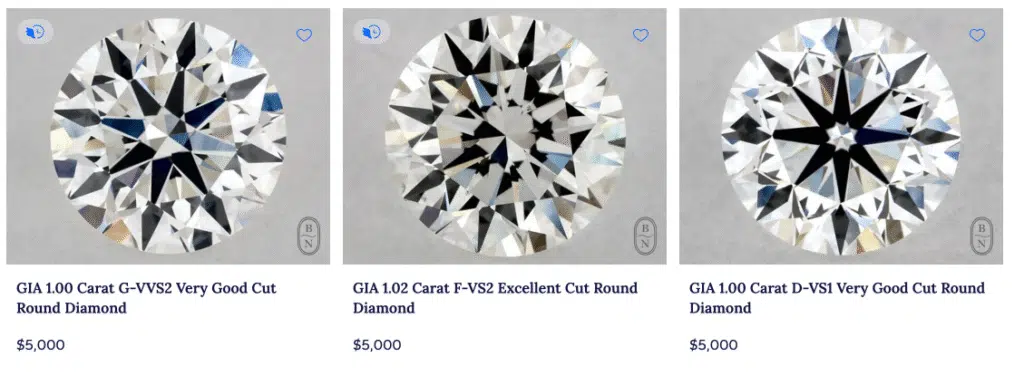
That, my friend, is the difference. It’s not a small difference; it is a life-changing difference in size, in quality, and in value. You’re not just getting a bigger diamond; you are making a verifiably smarter investment.
This is the core reason why countless positive Blue Nile Reviews all echo the same sentiment: their model empowers the buyer to get more for their money.
One Last Pro Tip: Before you ever click that final button on their site, do a quick search for a Blue Nile promo code. Sometimes you can get a discount on the price of the setting, stretching that $5,000 budget even further.
Choosing Your Shopping Style: The Screen vs. The Store
Alright, we’ve established that Blue Nile wins on the hard data—the certification and the value for your money. But this is where the Zales vs Blue Nile debate gets personal. This isn’t about spreadsheets anymore; it’s about the feeling in your gut.
It’s about how you feel most confident spending thousands of dollars on one of the most important purchases of your life.
Let’s be completely honest about the two very different experiences on offer.
The Zales In-Store Experience: Familiar Comfort
Let me be perfectly clear: I completely understand the appeal of walking into a physical jewelry store. It’s the way our parents and grandparents bought their rings. There’s a traditional, almost ceremonial, comfort to it.
You get to experience the tangible reality of it all. You can physically touch the cool, heavy metal of the ring. You can try on different styles to see how a certain shape looks on your hand. You get to have a real, face-to-face conversation with a salesperson, look them in the eye, and ask your questions.
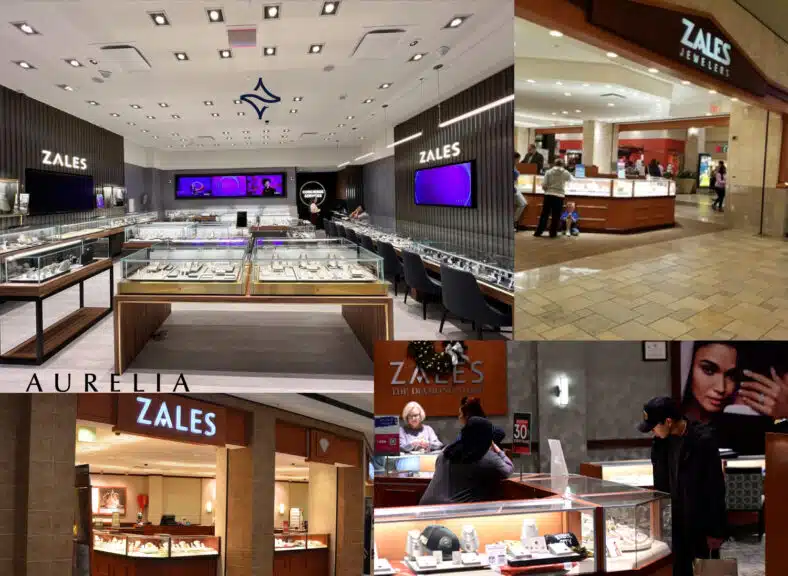
For the traditional shopper, that tactile, human-to-human ritual is a non-negotiable part of the process. It feels safe, familiar, and real. Zales, with its 700+ mall locations, is the undisputed king of providing that classic jewelry store experience.
And for that, they deserve credit. The question is, are you willing to pay a massive premium for that comfort?
The Blue Nile Online Experience: Data-Driven Empowerment
Now, let’s talk about the modern alternative. The founders of Blue Nile understood that traditional buyer anxiety from day one, and they have invested millions of dollars not just to bridge the physical gap, but to create an experience that is, in many ways, more informative and empowering than what you can get in a physical store.
This isn’t about just “shopping online.” This is about putting the jeweler’s loupe directly into your hands.
Their key advantage is their technology, which is designed to replace guesswork with certainty.

The 360° HD Videos:
This is their killer app. For nearly every diamond, you get a high-definition, 360-degree video that you can spin, zoom in on, and inspect endlessly from the comfort of your own couch. This isn’t just a video; it’s a superpower.
You can study the internal character and the light performance of a diamond more closely than you ever could in a store, free from the pressure of a salesperson looking over your shoulder.
Virtual Try-On & Educational Tools:
They offer tools that let you upload a photo of your hand to see how a specific ring size and shape will look. They provide a massive library of educational content that turns you into your own expert.
The entire experience is built around a philosophy of data, not salesmanship. It’s about discovery, not being sold to.
The experience doesn’t just end on the screen, either. When that ring arrives, the commitment to a premium experience becomes tangible. The level of luxury and care in the presentation is incredible, which is something we document in minute detail in our Blue Nile Unboxing Review.
The Bottom Line: Zales offers the comfort of the old way. Blue Nile offers the empowerment and control of the new way. For my money, having verifiable data and total control will always win.
Beyond the Engagement Ring — Warranties, Lab Diamonds & Fine Jewelry
We’ve covered the core of the Zales vs Blue Nile engagement ring debate. But a smart buyer knows that the relationship with a jeweler doesn’t end after you walk out the door.
The fine print in their warranties, their approach to modern trends like lab-grown diamonds, and the quality of their other jewelry are all crucial pieces of the puzzle.
This is where we go from being buyers to being truly informed consumers.
Best Deal Of The Year – Final Days
Blue Nile’s “Clear The Vault” is ON.
Shop Fine Jewelry Upto 70% OFF.
*Exclusions may apply. See Blue Nile for complete details.
The Fine Print Face-Off: After-Sale Service & Policies
Promises are easy to make before a sale. The true measure of a company is the promises they keep after they have your money. Here, Zales heavily promotes their “Lifetime Diamond Commitment,” but as we’ll see, the convenience comes with a major catch.
| Policy Aspect | Blue Nile’s Promise | Zales’ “Lifetime Commitment” |
| Warranty Focus | Covers any manufacturing defects. | Covers the diamond from chipping/loss. |
| Maintenance Rule | No mandatory inspections needed. | Must be inspected every 6 months. |
| The Catch | None. Straightforward and simple. | Miss one inspection, and your warranty is void. |
The biggest difference is that Zales puts the burden on you. To keep their “Lifetime Commitment” active, you are required to bring your ring into one of their stores for a cleaning and inspection every six months, for the rest of your life.
If you forget, or if you move to an area without a convenient Zales, that warranty is gone. Blue Nile’s lifetime manufacturing warranty is refreshingly simple: if a defect in craftsmanship causes a problem, they will fix it. Period. No mandatory check-ins required.
| Policy Aspect | Blue Nile’s Promise | Zales’ Promise |
| Upgrade Program | 100% diamond credit towards a 2x new stone. | 100% diamond credit towards a 2x new stone. |
| Return Window | 30-day full money-back guarantee. | 30-day full money-back guarantee. |
| Exchange Window | 30 days (as part of return). | 60-day exchange window for store credit. |
Both companies offer an identical and fantastic upgrade program, a testament to the enduring value of the diamonds they sell. Where they differ slightly is the exchange policy. Zales offers a longer 60-day window, but it’s for an exchange only (store credit).
This is a nice perk, but only if you are certain you want another piece from their store. The simplicity of Blue Nile’s 30-day money-back guarantee, detailed in our comprehensive Blue Nile FAQs, is often more straightforward for customers who may simply want a refund.
The Lab-Grown Diamond Revolution
The rise of high-quality, IGI and GIA-certified lab diamonds has completely reshaped the jewelry landscape, and the way each company has adapted tells a powerful story.
Blue Nile has embraced the lab-grown revolution with the same seriousness and transparency as their natural diamond business.
- They offer a massive, dedicated inventory of ~140,000+ lab stones.
- You get the same empowering tools: 360° videos and full reports.
- Lab diamonds are presented as a primary, high-quality choice.
- This commitment is why we wrote a guide to navigating their options: Does Blue Nile Sell Natural Diamonds (and Labs)?
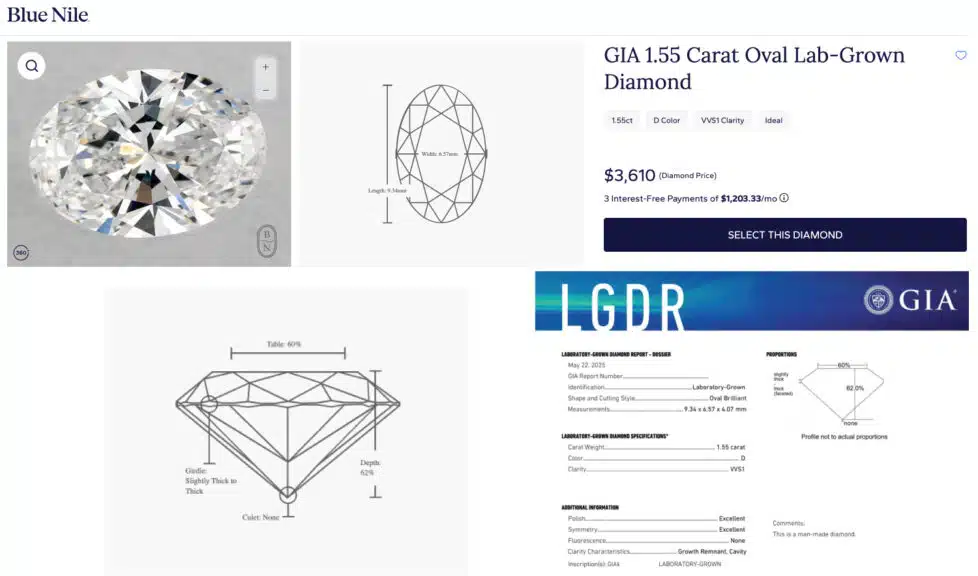
They understand that an educated buyer is their best customer, and they provide all the data you need, a topic we explore in our guide to the GIA’s New Lab Diamond Report.
Zales, true to its more traditional model, has been much slower to adapt. Their approach treats lab diamonds as more of a budget afterthought than a main event.
- Their online selection is extremely limited in comparison.
- They often use lower-tier or proprietary grading labs like GSI.
- Stones are often pre-set, giving you less choice.
- The experience lacks the deep, data-rich detail of Blue Nile.
The Bottom Line: If you’re shopping for a lab-grown diamond and want the best quality, certified by a top lab like IGI, with full transparency, Blue Nile is the only serious contender between the two.
What About Other Jewelry? (Gifts, Necklaces, and More)
Your jewelry needs don’t stop at the engagement ring. Sometimes you need a birthday gift, a classic pair of earrings, or a “just because” present. This is where the difference in their inventory philosophy becomes clear.
As a traditional mall jeweler, this is Zales’ home turf. They excel at offering a vast and varied inventory that caters to trends and broad gift-giving occasions.
- Fashion-Forward: More trendy and seasonal pieces.
- Designer Collaborations: Famous for lines like Disney and Vera Wang.
- Price Accessibility: A wider range of affordable gold chains and fashion rings.
- Gemstone Variety: A huge selection of birthstone jewelry and gifts.
They are a very strong choice when you’re looking for a stylish, accessible gift.
Blue Nile’s fine jewelry collection is more focused and curated, emphasizing timeless, “forever” pieces over fleeting trends.
- Focus on Classics: Think perfect diamond studs or a classic tennis bracelet.
- High-Quality Materials: Consistent use of solid 14k/18k gold and platinum.
- “Build Your Own” Options: Their customization extends to pendants and earrings.
- Gemstone Quality: They offer top-grade precious gems like sapphires and rubies.
Their fine jewelry reflects the same philosophy as their engagement rings: it’s about buying a high-quality, enduring asset. This quality is consistent whether you are shopping online or in one of the physical Blue Nile Jewelry Stores.
Your Final Questions, Answered Directly
You’ve seen the data, the pricing, and the policies. But I know when you’re this close to a decision, a few specific questions are probably still bouncing around in your head. Let’s tackle them right now, with the direct, no-nonsense answers you deserve.
The Final Verdict: Who Should You Trust With Your Moment?
So, we’ve stripped away the marketing, analyzed the fine print, and put the two business models head-to-head. After all the data, the choice in the Zales vs Blue Nile debate becomes incredibly clear.
But the final decision isn’t just about who is “better” in a vacuum; it’s about who is the right partner for you and this once-in-a-lifetime purchase.
As your friend in the business, let me make this as simple as I can. Here’s who each store is truly built for.
You Should Buy From Blue Nile If…
Let me be crystal clear about who wins in the Blue Nile model. You should choose Blue Nile if you see yourself in this description, because their entire business is engineered to empower you.
- You Are a Researcher at Heart. You’re the kind of person who believes that knowledge is power. You want to see the official GIA certificate for yourself, not just be told it’s a “good diamond.”
You trust verifiable data more than a persuasive sales pitch, and you enjoy the process of comparing stones to find the perfect one. - You Are Relentlessly Value-Driven. You understand that your hard-earned money should go into the quality and size of the diamond on your partner’s finger, not the rent for a fancy mall storefront.
Getting the absolute best, biggest, and brightest GIA-certified diamond for your budget is your number one priority. - You Want Total Control and Endless Choice. You want to compare ten different G-color diamonds side-by-side at 11 PM on your couch.
You don’t want to be limited to the two or three stones a salesperson pulls from a display case. You want access to a global vault of options to find the single stone that is perfect for you.
Ultimately, you believe that you are buying more than a ring—you’re buying the final product. We’ve answered the question in full detail for you here: Is Blue Nile Good for Engagement Rings?.
You Might Still Prefer Zales If…
Now, let me be fair. There is a type of buyer for whom the traditional Zales model still holds an appeal, and I completely understand why.
- The In-Person Experience is Everything. If the idea of physically holding a ring in your hand and trying it on before you make a decision is the single most important factor for your peace of mind, then a physical store is the only answer.
- You Are Uncomfortable With a Major Online Purchase. If the anxiety of spending thousands of dollars online is simply too great, then the comfort and familiarity of a face-to-face transaction is what you need.
- You Are Willing to Pay a Significant Premium for That Experience. This is the crucial trade-off you must be willing to make. You have to be comfortable knowing that the convenience of the in-store experience comes at a high price, and that the same budget would buy a significantly larger and verifiably certified diamond online.
At the end of the day, my job is to guide you to the smartest possible decision. For a modern, savvy buyer, the choice is clear.
If you’re ready to explore all your options in this new world of buying rings, my guide to the Best Places to Buy Engagement Rings Online is your next essential read. And if you have any—and I mean any—lingering questions about Blue Nile’s specific policies, I’ve built the ultimate Blue Nile FAQs page to give you that final piece of confidence.
Read Our 5-Star Blue Nile Review
Check our comprehensive Blue Nile review to learn why we rated Blue Nile 5 stars for their exceptional quality and value.
Continue Your Research Journey
You’ve just completed the head-to-head showdown. You are now armed with the insider knowledge to see past the marketing and understand the real difference between the old way of buying a diamond and the new way.
The next exciting step is to build on that foundation and become a true master of your own buying journey. These are the hand-picked guides I’ve created to get you there, answering the practical questions you’ll have as you get closer to popping the question.
Perfecting Your Choice & Style
- How big will it really look? Visualize it with my Diamond Carat Size Chart.
- Active lifestyle? Consider the pros and cons in my guide to the Benefits of a Low-Set Engagement Ring.
- Love the celebrity look? Get inspired by my deep dive on the stunning Selena Gomez Engagement Ring.
Navigating the Wedding Process
- You’ve got both rings, now what? I settle the debate: Which Ring Goes On First: Engagement and Wedding Band?
- It’s the morning of the ceremony. Here’s my practical advice on Do You Wear Your Engagement Ring On Your Wedding Day?
Exploring Beautiful Alternatives
- Thinking beyond a traditional diamond? Explore the #1 alternative in my Moissanite Engagement Rings Guide.
- For the truly unique and romantic, consider the beautiful, peachy-pink hues of a Morganite Engagement Ring.
Astor by Blue Nile is the collection for the data-driven buyer who demands scientific proof of performance. These diamonds are selected from the top 0.1% of Blue Nile's massive inventory, representing the most elite stones they offer. The collection's foundation is a unique dual-certification system that removes all guesswork, providing objective, third-party validation of a diamond's sparkle.
WHAT WE LOVE ABOUT THIS COLLECTION:
- Exclusive Dual Certification: Every diamond includes a GIA report plus a GemEx Light Performance report.
- Scientific Brilliance Scores: The GemEx report provides objective, numerical scores for Brilliance, Fire, and Sparkle.
- Ultimate Curation: Represents the absolute pinnacle of Blue Nile's inventory—only one in a thousand diamonds makes the cut.
- Guaranteed Performance: The strict vetting process guarantees an elite level of light performance, backed by data.
- The "Peace of Mind" Purchase: Perfect for buyers who want the proven best without needing to become a gemology expert themselves.
- Backed by Blue Nile's Upgrade Program: Your Astor diamond's full value can be applied toward a future upgrade.


